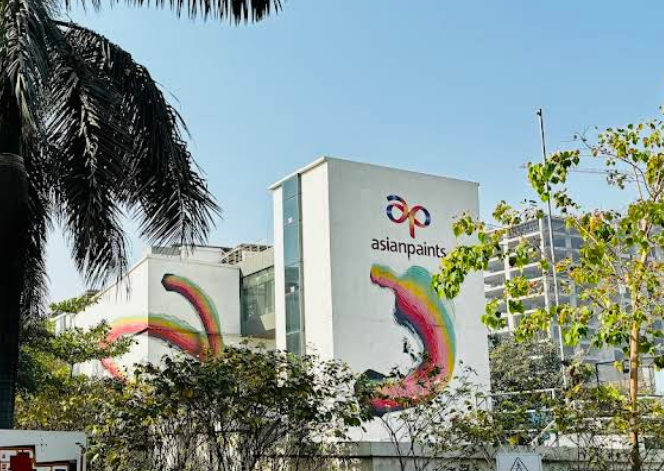The Indian paint industry is currently witnessing a major controversy as Birla Opus has filed a confidential complaint against Asian Paints with the Competition Commission of India. The allegations claim that Asian Paints is engaging in anti-competitive practices to maintain its dominant market position. While these claims are currently based on reports and not yet officially confirmed, the situation has sparked significant discussion about fair competition and market regulations in the sector.
The core of the allegations revolves around Asian Paints allegedly misusing its market dominance. Birla Opus claims that Asian Paints has been pressuring its retail dealers in multiple ways. First, Asian Paints reportedly instructed its dealers not to stock or promote competing brands, specifically targeting Birla Opus products. Second, dealers were allegedly threatened with restrictions on their credit facilities if they chose to stock rival products. These actions, if proven true, would represent clear attempts to limit competition in the market.
Beyond product stocking restrictions, the complaint includes several other serious allegations. Asian Paints is accused of preventing dealers from displaying Birla Opus branding or promotional materials in their stores. The company allegedly discouraged dealers from placing competing products in visible locations where customers could easily notice them. Additionally, there are claims about Asian Paints controlling access to tinting machines, which are essential for color customization in the paint industry. By limiting competitors' access to these machines, Asian Paints may have been making it harder for other brands to attract customers.
The legal framework for this case comes under the Competition Act of 2002, which was introduced during Arun Jaitley's tenure. This law specifically prohibits two main types of anti-competitive behavior: anti-competitive agreements between companies and abuse of dominant market position. The current allegations against Asian Paints would fall under the second category if proven true. The Competition Commission of India is currently reviewing the complaint but has not yet decided whether to launch a full investigation. If the CCI does proceed with an investigation and finds Asian Paints guilty, the company could face significant penalties including fines and orders to change its business practices.
The market context makes this case particularly important. Asian Paints currently holds about 52 percent of the decorative paints market, though this represents a decline from its previous 59 percent share. This erosion of market dominance comes as new competitors like Birla Opus have been making significant inroads. Despite being a relatively new entrant, Birla Opus has managed to capture about 7 percent of the market through aggressive expansion. The competitive landscape may become even more intense with reports suggesting that JSW Paints might acquire Dulux India, which could create another strong competitor in the industry.
For investors and industry observers, this case serves as an important reminder of how regulatory risks can affect even the most established market leaders. The outcome of this complaint could have significant implications for Asian Paints' business model and market strategy. If the CCI rules against Asian Paints, the company may need to make substantial changes to how it interacts with dealers and competitors. Such changes could potentially level the playing field for other brands but might also impact Asian Paints' profitability and market position.
The situation also highlights the broader challenges of maintaining fair competition in rapidly growing industries. As new players enter the market and existing ones expand, tensions over market share and competitive practices are likely to increase. This case may set important precedents for how such disputes are handled in the future, making it particularly significant for the entire sector.
As of now, all parties involved have declined to comment officially on the allegations. Asian Paints, Birla Opus, and the CCI have not released any formal statements regarding the complaint. This silence suggests that the matter is still under careful consideration by the authorities. Industry watchers should pay close attention to any developments, as the CCI's decision on whether to investigate could come at any time.
In conclusion, the allegations against Asian Paints represent a critical moment for India's paint industry. The case touches on fundamental questions about fair competition, market dominance, and regulatory oversight. While the truth of the allegations remains to be proven, the mere existence of such serious claims against the market leader indicates that the competitive dynamics in the sector are intensifying. The final outcome of this case could reshape the industry landscape and influence how companies compete in this important market segment.
It’s important to note that these allegations are currently based on reports from sources, and official confirmation from the involved parties is still pending. Investors and industry participants should monitor the situation closely as it develops, as the eventual resolution could have significant implications for all stakeholders in the Indian paint industry.
Disclaimer:
The information provided in this article is based on reports and sources currently available and has not been officially confirmed by the parties involved. This content is for informational purposes only and should not be considered as legal or financial advice. Readers and investors are advised to conduct their own research and consult with professional advisors before making any decisions related to the Indian paint industry or the companies mentioned.





